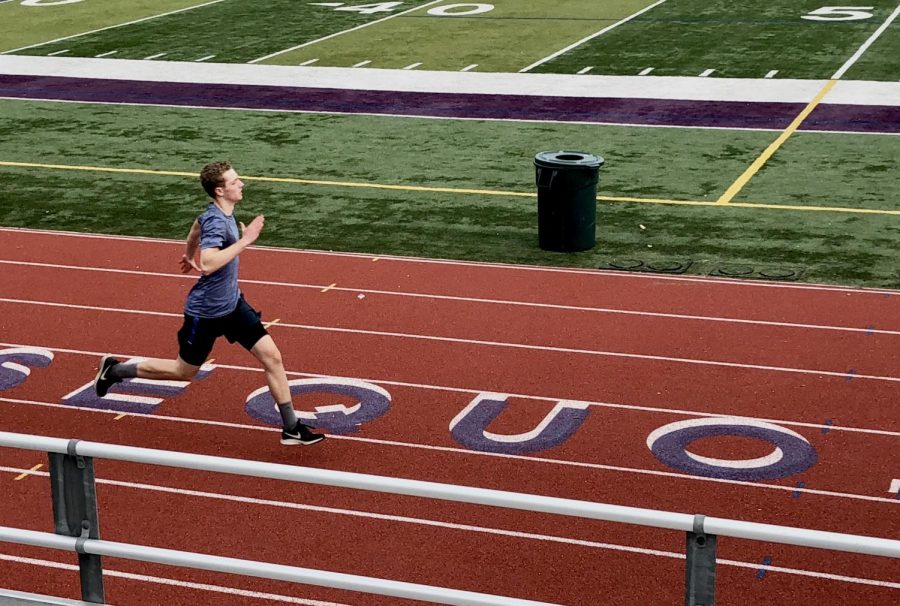Miles away from a passing grade
Junior, John Horan running in track. Running with passion is helpful for miles, though many teens lack determination.
March 8, 2019
Many teenagers loathe the idea of running the mile in physical education (P.E.). Reasons for this include lack of determination and another could be that they are out of shape or unhealthy. According to The World Health Organization, many teens who find P.E. agitating will have long lasting complications for future health.
Students lack passion for running while others don’t. Those who do usually are the ones who don’t do very well or don’t like the mile. In order to achieve a passing mile time, it requires proper form alongside proper training. Though a handful of teens don’t have proper training, they may have disadvantages when it comes to their body and issues. School work, personal issues and stress levels won’t at all help with proper form.
Teens definitely do not go out to play tag or ball as much as previous generations had. I discovered from The Telegraph that researchers claim the endurance of teens is on average 15 percent less opposed to the youth of the same age 30 to 40 years ago. You’d think there be a little more sympathy for teens, as stated by the Pew Research Center that two thirds of today’s youth are far less virtuous and much more lazy.
Technology plays a huge role in the ramifications. More teenagers have their mind hooked on video games and social media. As a result, school sports and P.E. are the sole ways most students will be provided with physical activity.
“I like it because it gives me a challenge but I know why people don’t agree with it,” freshman Maddox Pepa said, an experienced runner. “If people want to get active then I think the mile is a good choice.”
Teens that do participate in sports often do so in excess, though the participation is falling as opposed to child obesity which is gradually rising. The teens who do a surplus amount in sports and have great determination are labelled as young athletes who can run a mile as quick as 7 to 6 minutes. But these “young athletes” are the minority.
As these young athletes put in much devotion, they have the risk of repetitive strain injury, which is very common. There are more than 3 million cases in the U.S. per year. Though these teens are the ones the mile time is favoring.
Teens are expected to run miles when some may have body issues or are severely stressed because of grades. This won’t help accurate depictions of proper form and won’t allow them to have great mile times.
Naturally teens may not like the mile all too much. They are forced to run to get in shape and have a better body, though they’re being set up for failure when they must run miles that decrease thirty seconds every other mile, which is unreasonable for the amount of running they do compared to the more persistent kids.
“At first I found the [mile time expectations] a little [absurd] but I thought it was better when I got into running more,” Pepa said.
It all comes down to the mile time grouping the youth into one category: fit and healthy. But that isn’t always true, when not most teens fit into that group and have to take more time. The mile time may be trying to flourish their running, though it is only harming their grades and may even harm their futures for the reason that they aren’t fit enough.
“I feel like it’s not fair because there are people who exercise and are used to running,” Rojas said. “Those who aren’t used to running as much won’t be able to pass because it ponders to the more athletic group of kids.”








